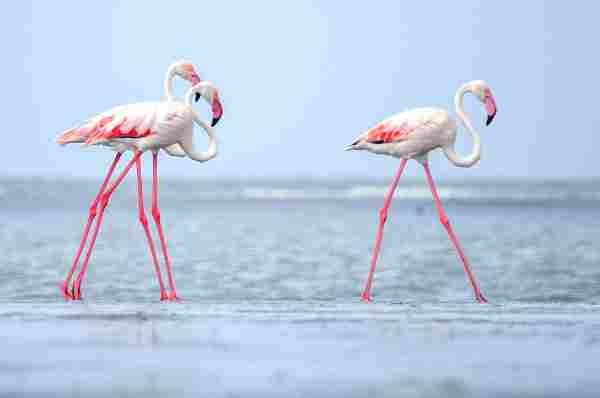Greetings and welcome to this informative piece highlighting the Top 10 Most Intellectually Challenged Creatures on Earth. Within the vast realm of the animal kingdom, comprising nearly two million distinct species, a spectrum of cognitive abilities exists. While some exhibit impressive intelligence, others tend to display a more sluggish disposition. Humans, in particular, can be considered a blend of both traits.
Table of Contents
While it is true that animals possess varying degrees of intelligence, there are certain creatures whose actions and behaviours appear remarkably irrational, almost unbelievably foolish. If you once believed that such bewildering levels of dim-wittedness were exclusively reserved for humans, thereby creating an insurmountable cognitive divide, prepare to be enlightened! Yes, indeed, certain animals exhibit a distinct lack of intellectual prowess, engaging in behaviours that jeopardize their own survival.
If you find yourself eagerly anticipating the revelation of the ten animals that occupy the esteemed positions on the “Top 10 Dumbest Animals in the World” roster, your search ends here. This article will provide you with all the essential information you seek.
1. Panda Bear

Introducing one of the most extraordinary bear species on our planet, the giant panda (Ailuropoda melanoleuca), also commonly referred to as the panda bear or simply the panda. With its striking black-and-white fur and robust physique, this bear stands out as a truly remarkable creature. To avoid any confusion with the red panda, a close relative from the musteloid family, the term “giant panda” is often employed.
The giant panda possesses a rather unique diet, primarily a folivore, with over 99% of its sustenance derived from bamboo shoots and leaves. However, in the natural world, pandas may occasionally consume other food sources such as various types of grass, wild tubers, or even meat, including birds, rodents, or carrion. In some zoos, pandas are provided with a combination of natural ingredients and specially prepared food.
Undeniably, pandas are incredibly endearing creatures. However, their intellect does not match their charm, which places them among the top 10 least intelligent animals in the world. Despite being classified as carnivores, pandas exhibit a strong preference for a plant-based diet over consuming other animals.
Unfortunately, pandas also rank low in terms of their romantic endeavours. Their species is already at risk of extinction, being classified as endangered. Furthermore, pandas have a dismal track record when it comes to nurturing and raising their young. In some cases, female pandas have resorted to killing their offspring out of frustration and weariness.
2. Turkey
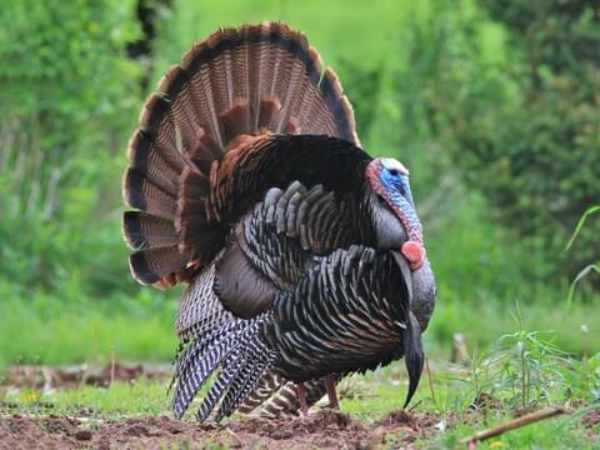
The advent of industrial farming has led to the widespread affordability of domestic turkeys, primarily due to their remarkable meat production capacity. As a result, these birds have gained immense popularity in temperate regions across the globe.
Juvenile domestic turkeys are commonly referred to as poults or turkeylings, while their female counterparts are known as hens. Interestingly, male turkeys in North America and the United Kingdom bear two distinct names: toms and stags.
The majority of turkeys raised in the United States are of the domestic feathered variety, although brown or feathered turkeys are also bred. The snood and wattle, which are fleshy protrusions located above and below the beak respectively, are distinctive features of these birds.
Curiously, the English-language name for this species emerged from an early misidentification with an unrelated species that was mistakenly associated with Turkey, a country in Europe.
The term “Gallopovus,” originating from Latin, can be translated as “chicken peacock,” which is yet another name used to refer to turkeys. Regrettably, domestic turkeys fall into the category of the world’s least intelligent creatures, displaying a notable lack of cognitive abilities. Their inclination to drink rainwater sometimes leads to their demise during rainfall.
Even in the midst of rain, turkeys have a peculiar habit of fixating their gaze upon the sky. Life proves to be challenging when you rank among the top 10 dimmest animals in existence.
These birds are also affected by a genetic disorder called “genetic torticollar spasms,” which causes them to continuously gaze at the sky, even in inclement weather conditions. In their quest for reproduction, male turkeys occasionally exhibit disturbing behaviour of engaging in sexual activity with the severed heads of female turkeys.
3. Jerboa
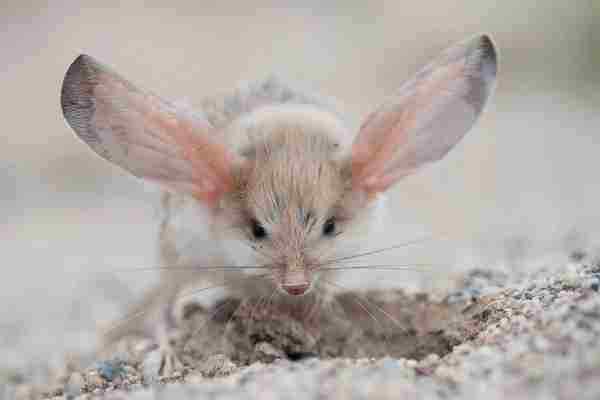
The Dipodidae family, commonly known as desert rats, can be found across North Africa and Asia, primarily inhabiting arid and scorching desert regions. These agile creatures, known as jerboas, possess remarkable speed and agility. When pursued, they can sprint at an impressive pace of up to 15 miles per hour (24 km/h). Interestingly, certain species of Central Asian jerboas serve as a food source for a small owl known as Athene noctua.
Jerboas have evolved excellent hearing abilities, which they utilize to protect themselves from nocturnal predators. On average, these remarkable creatures have a lifespan of approximately six years.
In order to evade predators, jerboas employ their unique bipedal locomotion, engaging in a combination of jumps, skips, and runs characterized by rapid and unpredictable changes in speed and direction.
Surprisingly, the British Army adopted the jerboa as the mascot for their 7th Armoured Brigade, a decision that caught many people off guard. The jerboa’s distinct jumping style serves as a deterrent to predators. However, they are not particularly skilled at hiding or scavenging for food in the garbage.
4. Ostrich

Ostriches, among the largest flightless birds alive today, share this characteristic with other avian species such as emus and kiwis. These remarkable creatures are predominantly found in Africa, where they can be observed in flocks of up to 50 individuals. With a weight that can reach up to 320 pounds (145 kg), ostriches possess small wings that are incapable of supporting their massive bodies, rendering flight impossible.
Although flight is not an option, ostriches compensate by relying on their impressive running abilities. They can sprint at speeds of up to 43 miles per hour (70 km/h) and maintain a constant running pace of 31 miles per hour (50 km/h).
When faced with a predator that they cannot outrun, ostriches employ their powerful legs as weapons, delivering forceful kicks in defence. Despite being regarded as one of the least intelligent animals, ostriches do not exhibit the behaviour of sticking their heads in the ground to become ‘invisible,’ as popular belief suggests.
What does contribute to their inclusion on the list of the top 10 least intelligent animals is their response when confronted with a threat they cannot escape or physical combat. In such instances, ostriches flop onto the ground, extending their necks forward. Their heads and necks possess a grey/pink/peach colouring that blends with the sandy environment, creating an illusion of their heads being buried in the ground. Curiously, the bird itself mistakenly believes that it has become invisible to the threat by adopting this posture.
5. Sloths

Sloths belong to the Folivora suborder, a group of arboreal xenarthrans that inhabit the forests of South and Central America. These leisurely creatures can often be found hanging upside down from tree branches in tropical jungles.
They share similarities with anteaters, which are part of the xenarthran order Pilosa and share a common ancestor.
Costa Rica has experienced a high number of sloth deaths, primarily caused by electrical wires and poachers. Despite being targeted by human hunters, sloths are surprisingly adept at holding onto tree branches with their claws while hanging upside down, making it difficult for them to be dislodged even when shot from below.
Sloths have been illicitly traded as pets due to animal trafficking. However, they are not suitable pets due to their specialized ecosystem requirements.
Sloths are renowned for their slow pace and lack of intelligence, earning them a place on the list of the world’s top 10 dumbest animals. They spend a significant amount of time sleeping in the nearby trees, although they never defecate in that location. Once a week, they descend to the ground to perform their necessary bodily functions before returning to the trees again.
6. Koala
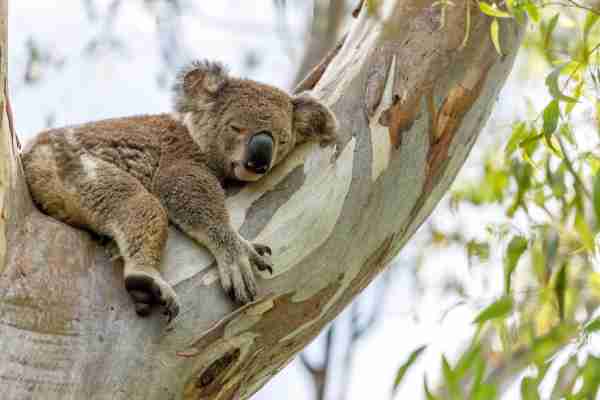
The Koala, also known as the koala bear (although this is incorrect), is a mammal that resides in forests and feeds on plants. It is native to Australia and was mistakenly identified as a bear or monkey by early European settlers in the country.
Despite being commonly referred to as “koala bears” by the general public, koalas are actually marsupials, more closely related to wombats and kangaroos than bears.
The distinctive features of the koala, such as its large head, fluffy round ears, and spoon-shaped nose, are unique to the populations found along Australia’s eastern and southern coasts. They can grow to be 24 to 33 inches (60 to 85cm) in length and weigh between 9 and 33 pounds.
Koalas come in various colours, ranging from silver-grey to dark chocolate brown. There are differences in size and colour between koalas in the northern and southern regions, which has led to debates on whether these populations are distinct subspecies.
Although most of a koala’s diet consists of eucalyptus leaves, they can also consume foliage from other tree genera like Acacia, Allocasuarina, Callitris, Leptospermum, and Melaleuca. While there are approximately 600 species of eucalyptus, koalas have a strong preference for around 30 specific ones. They favour species with high protein content and low fibre and lignin content.
Koalas have the smallest brain-to-body ratio among animals. These charming creatures are primarily found in Australia, where they rely on a diet of nutrient-poor eucalyptus leaves. This diet requires koalas to have four stomachs for digestion.
Additionally, koalas are vulnerable to health issues. It is estimated that around 90% of koalas are infected with chlamydia. They may also face starvation if they cannot recognize their food source, further contributing to their inclusion on the list of the world’s top 10 dumbest animals.
7. Kakapo
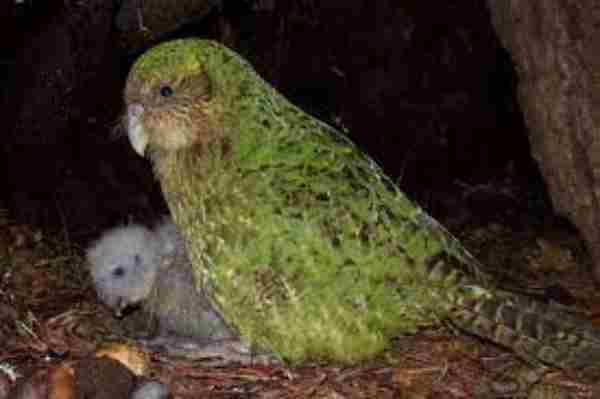
The Kakapo (Strigops habroptilus) is a unique parrot species native to New Zealand that possesses distinctive characteristics. It is a large, flightless bird that dwells on the ground and is primarily active during the night.
Belonging to the Strigopoidea superfamily, the Kakapo is considered one of the top 10 least intelligent animals, despite parrots generally being recognized as highly intelligent creatures. When faced with a predator, the Kakapo becomes immobile with fear instead of attempting to escape. It has a preference for consuming berries, which only appear every four years.
However, the Kakapo faces challenges in breeding. Male Kakapos create special mating territories and emit deep booming calls to attract females. Unfortunately, due to the wide reverberation of the female’s calls, she often struggles to reach the designated mating area, making successful encounters almost impossible. As a consequence, the population of Kakapos has drastically declined, with only approximately 150 individuals remaining worldwide.
The Kakapo possesses distinctive physical features such as a notable facial disc, a large grey beak, short legs, large feet, and relatively short wings and tail. It holds several exceptional characteristics within the parrot family, including being the only flightless parrot, the largest parrot species, nocturnal behaviour, herbivorous diet, noticeable differences in body size between males and females, a low base metabolic rate, and the absence of male parental support. These traits contribute to the Kakapo’s unique breeding system known as a polygynous lek, where one male mates with multiple females. Recent research suggests that the Kakapo may be one of the oldest bird species in the world.
8. Cane toad
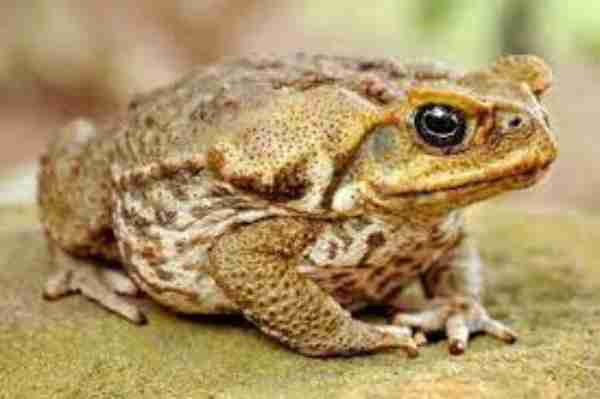
Cane toads, scientifically known as Bufo marinus (Rhinella marina), possess a negative reputation in Australia due to their robust and heavily-built nature. These amphibians have become an invasive species in Australia, wreaking havoc on the country’s delicate ecosystems and unique biodiversity. Cane toads, like their counterparts, are remarkably unintelligent creatures.
Frequently, one can observe them engaging in amorous activities with various creatures, ranging from snakes and lizards to mice and salamanders. They show little discrimination and may even attempt to mate with a female toad that is trying to escape. A single female toad can lay an astonishing number of up to 30,000 eggs. Interestingly, cane toads have been utilized in both commercial and non-commercial endeavours, including pest control.
In the traditional habitat of the Embera-Wounaan tribe in South America, toads were traditionally “milked” for their venom, which was then employed as an arrow poison. It is also speculated that the Olmecs used these toxins as entheogens.
In Peru, the toad has been targeted as a source of food and is consumed after meticulous removal of the skin and parotoid glands, which contain potent toxins. When prepared correctly, toad meat is rich in omega-3 fatty acids and therefore considered beneficial.
9. Slow loris

The Slow Lorises, belonging to the nocturnal strepsirrhine monkey genus Nycticebus, encompass various species and can be found across Southeast Asia and its neighbouring regions. Their distribution extends from Bangladesh and Northeast India in the west to the Sulu Archipelago in the east, and from Yunnan Province in China in the north to Java in the south.
During the night, Slow Lorises primarily engage in solitary foraging, although their social structure remains largely understudied. While sluggish lorises typically sleep alone during the day, occasional exceptions may occur. The home ranges of adult lorises often overlap significantly, with males generally having larger territories than females.
Due to limited firsthand research on the genus, primatologist Simon Bearder hypothesized that the social behaviour of Slow Lorises is similar to that of the Potto, another nocturnal primate.
To defend themselves against predators, slow and medium Lorises have developed unique defence mechanisms. Their slow and deliberate movements scarcely disturb the surrounding foliage, making it extremely difficult to detect their presence. Once they come to a halt, they remain motionless for extended periods of time.
In Indonesia, Slow Lorises are commonly referred to as ‘malu malu,’ which translates to ‘shy one,’ as they freeze and conceal their faces when approached.
10. Flamingo
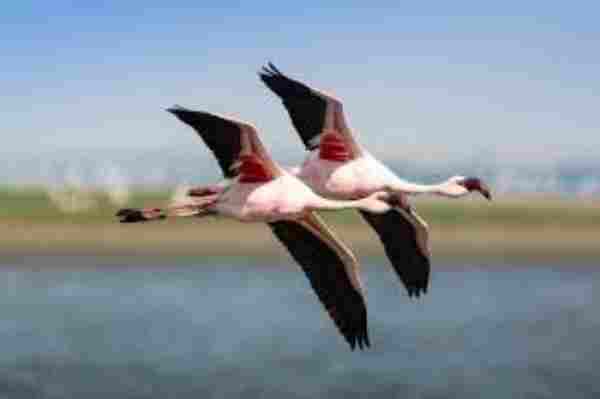
The family Phoenicopteridae comprises wading birds, among which Flamingos are included. There are four species of Flamingo found in North America, including the Caribbean, as well as two species that are native to Africa and Asia—the greater and lesser Flamingos. Flamingos possess a certain charm and appeal.
These birds have two legs but typically rely on one of them for most activities. They often use a single leg as a resting support, showcasing an interesting behaviour that could be seen as somewhat foolish. They even attempt to catch fish by dipping their upside-down beaks into the water.
While the exact reason for this fishing technique remains unclear, the behaviour itself contributes to classifying these birds as one of the top 10 least intelligent animals in the world. Flamingos hold a special place in the hearts of the people of the Bahamas and are frequently depicted in their artistic creations. In fact, the Flamingo is the national bird of the Bahamas.
In the Andes, there was a belief that the fat of Flamingos had medicinal properties and could be used to treat tuberculosis. Flamingo lawn ornaments are also quite popular in the United States, becoming a common decorative item for many households.
How to know if the animal is dumb or intelligent
Animal intelligence is often praised, with dolphins being considered more intelligent than many humans. Examples like Koko the Gorilla, who could communicate using sign language to express love, further highlight the potential intelligence of animals. However, just as in human groups, there are individuals among animals who appear to lack intelligence.
Having a brain does not guarantee mental agility in animals. Some creatures demonstrate behaviours that firmly establish them among the top 10 least intelligent animals in the world, proving that animals can be as unintelligent, naive, and self-centred as humans.
Experts use three categories to assess animal intelligence: instinct, adaptable intelligence, and obedient intelligence. Instinctive intelligence considers an animal’s natural survival strategies, such as herding, hunting, retrieving, or any domesticated behaviours they may possess.
Adaptive intelligence refers to an animal’s capacity to adapt to new environments and learn new tasks or behaviours independently, as well as how quickly they can acquire new skills.
Obedient intelligence encompasses an animal’s problem-solving abilities. It determines how easily different animals can be trained and how well they retain the training over time.
The more intelligent an animal is, the better it can perform tasks it has been taught. On the other hand, a truly unintelligent animal may only listen to or learn instructions about 25% of the time.
FAQs
What is the #1 dumbest animal?
Ostrich, While it may be easy to jump to conclusions, the truth is that intelligence is a difficult trait to measure and compare across species. However, there are some animals that have gained reputations for being less intelligent than others. From the slow-moving sloth to the less-than-cunning turkey, there are certainly contenders for the title of “dumbest animal.” So while the answer may never truly be known, it’s safe to say that there are some creatures out there that may not be the sharpest tools in the shed.
What animal has the least intelligence?
Panda Bear.
Are sloths smart or dumb?
While they may not be the most active creatures, they have a number of intriguing abilities. For starters, sloths can rotate their necks up to 270 degrees, thanks to the extra vertebrae that they possess. They are also skilled at camouflaging themselves in trees, making it difficult for predators to locate them.
Final Words
While animals are equipped with specific skills and abilities to survive in the wild, there are certain creatures that fall short in the intelligence department. The top 10 dumbest animals in the world struggle to thrive in their habitats due to their limited capabilities.
Interestingly enough, their lack of intelligence is not entirely a disadvantage. In fact, some of these creatures have evolved to depend on others in order to survive, making them incredibly resilient in their own right.
Reference:
- https://www.strawindia.org/blogs/1040/where-do-animals-rank-on-the-iq-scale.aspx
- https://www.sundaypost.com/fp/meet-the-brainiest-animals-on-earth

Jeevan Kodiyan
An animal enthusiast with an interest in zoology, studying the behavior and activities of animals in the wild habitat. I work on research projects related to species conservation and endangered species protection. I also leverage zoology to become an educator, educating others about the importance of protecting our natural environment and the beauty of animals in their natural habitats.

